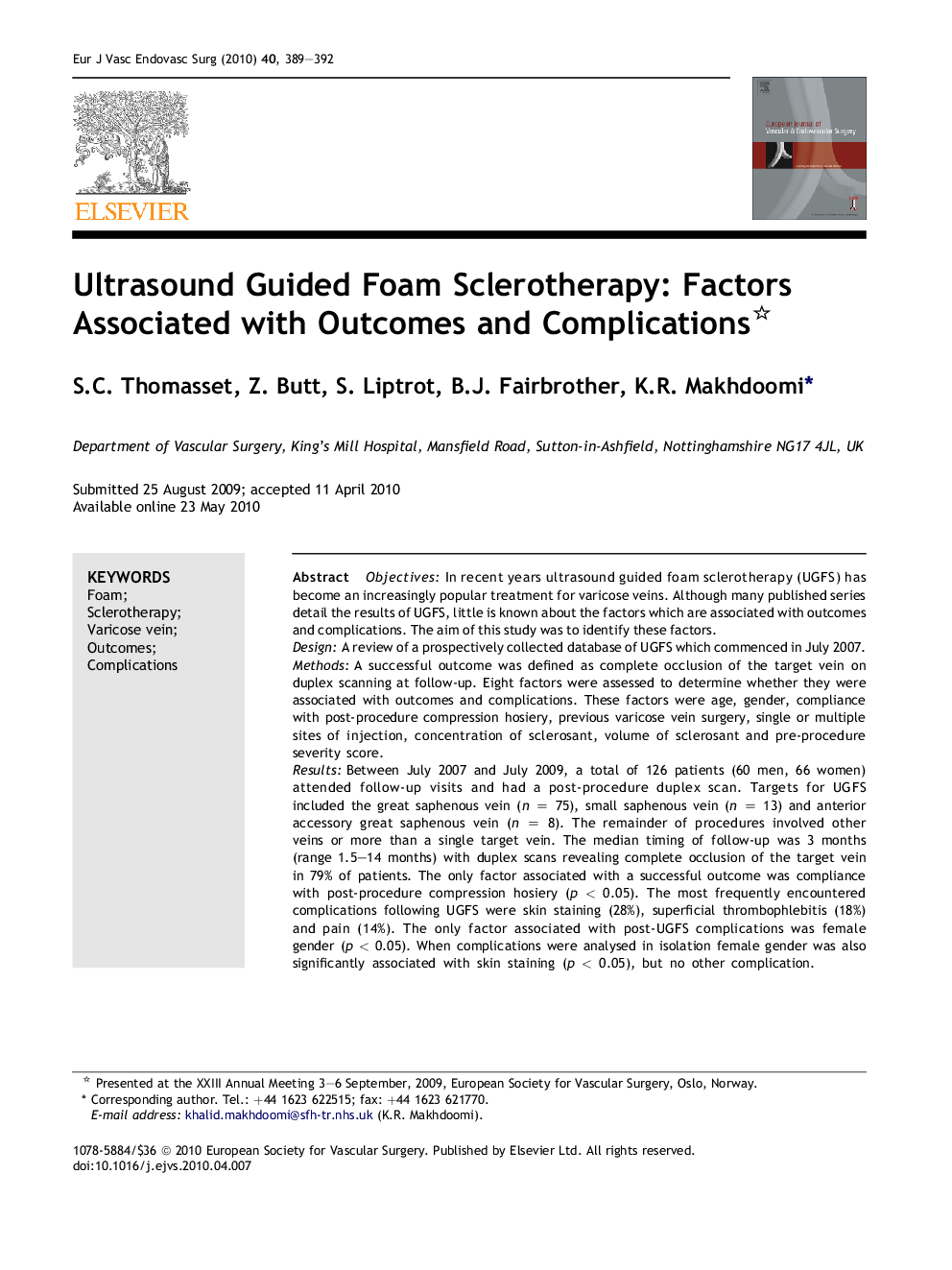| Article ID | Journal | Published Year | Pages | File Type |
|---|---|---|---|---|
| 2913017 | European Journal of Vascular and Endovascular Surgery | 2010 | 4 Pages |
ObjectivesIn recent years ultrasound guided foam sclerotherapy (UGFS) has become an increasingly popular treatment for varicose veins. Although many published series detail the results of UGFS, little is known about the factors which are associated with outcomes and complications. The aim of this study was to identify these factors.DesignA review of a prospectively collected database of UGFS which commenced in July 2007.MethodsA successful outcome was defined as complete occlusion of the target vein on duplex scanning at follow-up. Eight factors were assessed to determine whether they were associated with outcomes and complications. These factors were age, gender, compliance with post-procedure compression hosiery, previous varicose vein surgery, single or multiple sites of injection, concentration of sclerosant, volume of sclerosant and pre-procedure severity score.ResultsBetween July 2007 and July 2009, a total of 126 patients (60 men, 66 women) attended follow-up visits and had a post-procedure duplex scan. Targets for UGFS included the great saphenous vein (n = 75), small saphenous vein (n = 13) and anterior accessory great saphenous vein (n = 8). The remainder of procedures involved other veins or more than a single target vein. The median timing of follow-up was 3 months (range 1.5–14 months) with duplex scans revealing complete occlusion of the target vein in 79% of patients. The only factor associated with a successful outcome was compliance with post-procedure compression hosiery (p < 0.05). The most frequently encountered complications following UGFS were skin staining (28%), superficial thrombophlebitis (18%) and pain (14%). The only factor associated with post-UGFS complications was female gender (p < 0.05). When complications were analysed in isolation female gender was also significantly associated with skin staining (p < 0.05), but no other complication.ConclusionsThese data suggest that compliance with post-procedure compression hosiery and gender are important factors associated with a successful outcome and reported complications following UGFS, respectively.
